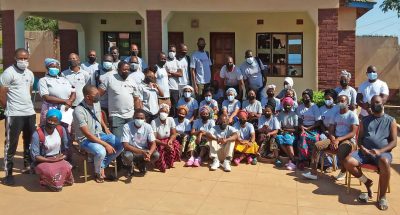Feature story

The field research team of the Malawi Longitudinal Study of Families and Health
At the beginning of the COVID-19 pandemic, it was widely predicted that sub-Saharan African populations would be the hardest hit by the virus for various reasons including limited medical infrastructure, overcrowded living conditions, high prevalence of other infectious diseases, and manual labor-based economies which preclude easy social distancing.
But as the first wave of the pandemic peaked in 2020, news stories and scientific journal articles were reporting the apparent low rates of COVID-19 transmission and mortality in Africa. Iliana & Hans-Peter Kohler from the Penn Population Aging Research Center led a team to understand why.
Read the news article, which describes the effort to get the survey in the field as quickly as possible, in Penn Today and the research paper, Curtailing Covid-19 on a dollar-a-day in Malawi: Role of community leadership for shaping public health and economic responses to the pandemic, in World Development.
